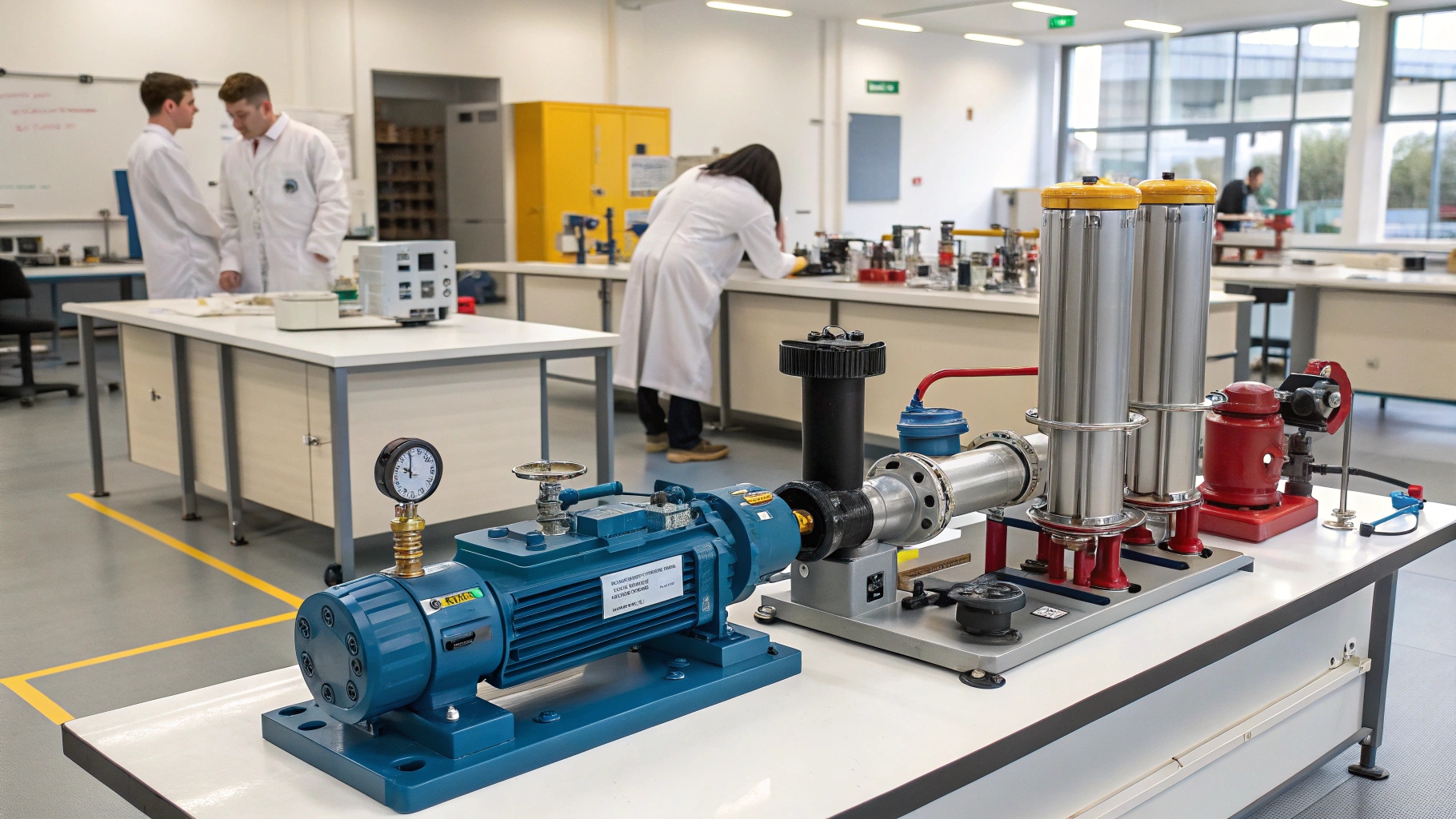The Laboratorio de Mecánica de Fluidos at UNPRG (Universidad Nacional Pedro Ruiz Gallo) is a vital facility dedicated to the study of fluid mechanics.
Located within the Faculty of Industrial Engineering (FICSA), the laboratory provides a space for both research and practical experimentation. It helps students understand the principles of fluid behavior through hands-on learning, bridging the gap between theory and real-world applications. The lab also fosters cutting-edge research in areas such as hydraulics, aerodynamics, and turbulence.
By offering advanced equipment and a collaborative environment, it supports the development of future engineers. This article explores the lab’s role in education, research, and industry advancements.
The Role of the Laboratorio de Mecánica de Fluidos (MechFluids)
The Laboratorio de Mecánica de Fluidos at UNPRG aims to provide students and researchers with the tools and environments necessary to understand and investigate the behavior of fluids in various conditions. The laboratory serves as both a teaching space for students studying mechanical engineering and industrial engineering and as a research facility for ongoing projects related to fluid dynamics.
Fluid mechanics as a branch of physics focuses on the study of fluids (liquids and gases) at rest and in motion. The laboratory offers a space where theoretical knowledge and practical applications meet, allowing students and researchers to conduct experiments that are crucial in shaping modern engineering technologies. From studying laminar and turbulent flows to analyzing the impact of fluid behavior in various environments, the Laboratorio de Mecánica de Fluidos plays a vital role in producing skilled engineers equipped with advanced knowledge.
Mission and Objectives
The primary mission of the Laboratorio de Mecánica de Fluidos is to enhance the understanding of fluid behavior through hands-on experimentation, bridging the gap between theoretical knowledge and real-world application. The laboratory provides students with a deeper understanding of concepts such as pressure, flow rate, fluid resistance, and hydraulic systems, which are integral to their future careers.
The specific objectives of the laboratory include:
Providing Educational Support:
Offering students a comprehensive understanding of fluid mechanics through practical experiments.
Promoting Research:
Facilitating research activities that explore advanced topics in fluid mechanics and their applications in modern engineering.
Research Activities at the Laboratory
Research at the Laboratorio de Mecánica de Fluidos focuses on several critical areas in fluid mechanics. These include:
Hydraulic Systems:
The study of how fluids behave in closed and open systems, such as pumps, pipes, and valves. Researchers in this area analyze energy losses, flow characteristics, and the design of efficient systems.
Aerodynamics:
The study of airflows around objects, which has direct applications in fields such as aviation and automotive engineering. Understanding the dynamics of airflows can improve the design of vehicles, aircraft, and even sports equipment.
Turbulence Studies:
One of the more complex phenomena in fluid mechanics is turbulence, where fluid flows in chaotic and unpredictable patterns. The laboratory investigates the mechanisms behind turbulence and its effects on energy loss, efficiency, and stability in systems.
Key Technologies and Equipment
To conduct high-level research and experimentation, the Laboratorio de Mecánica de Fluidos utilizes various state-of-the-art technologies and equipment. Some of the notable tools include:
Wind Tunnel:
A tool used to simulate the aerodynamic properties of different objects by creating controlled airflow around them.
Hydraulic Bench:
A setup for conducting experiments related to the flow of water, pressure measurements, and fluid resistance in different piping systems.
Flow Meters:
Devices that measure the flow rate of fluids through a system, critical for experiments involving fluid transport.
Viscometers:
Instruments used to measure the viscosity of fluids, helping researchers understand how fluids resist deformation under shear stress.
Educational Role of the Laboratory
The laboratory serves as a training ground for students pursuing degrees in engineering, particularly those studying mechanical, industrial, and civil engineering. It plays an essential role in helping students grasp complex fluid mechanics concepts, providing them with hands-on experience that will be beneficial when they enter the workforce. Additionally, the laboratory often hosts seminars, workshops, and internships that further enhance the learning experience and connect students with industry professionals.
FAQs
1. What is fluid mechanics?
Fluid mechanics is the branch of physics that deals with the behavior of fluids (liquids and gases) under various conditions, such as when they are at rest or in motion.
2. What is the purpose of the Laboratorio de Mecánica de Fluidos at UNPRG?
The laboratory provides a space for students and researchers to experiment and explore fluid behavior, helping them bridge the gap between theoretical knowledge and real-world applications.
3. What areas of research are explored at the laboratory?
Research areas include hydraulic systems, aerodynamics, turbulence, flow visualization, and environmental applications of fluid mechanics.
4. What types of equipment are used in the laboratory?
The laboratory uses various advanced tools, such as wind tunnels, hydraulic benches, flow meters, and viscometers, to study the behavior of fluids under different conditions.
5. How does the laboratory support student education?
It offers hands-on learning opportunities, allowing students to conduct experiments that reinforce their understanding of fluid dynamics and related concepts.
6. How does fluid mechanics impact various industries?
Fluid mechanics is crucial in industries like aerospace, automotive, energy, environmental engineering, and healthcare, where understanding fluid behavior is essential for system design and optimization.
7. What are turbulence studies in fluid mechanics?
Turbulence studies focus on chaotic, unpredictable fluid flow patterns, helping to understand their effects on energy loss, system efficiency, and stability in various engineering applications.
8. How is fluid mechanics applied to environmental research?
Fluid mechanics is used to study the movement of pollutants in water, air flow for weather prediction, and fluid dynamics in natural processes, helping to solve environmental challenges.
9. Are there opportunities for students to participate in internships or industry projects?
Yes, the laboratory provides opportunities for students to gain practical experience through internships and collaborative research projects with industry professionals.
10. What makes the Laboratorio de Mecánica de Fluidos unique?
The laboratory’s combination of high-tech equipment, its focus on both education and research, and its contribution to solving real-world engineering challenges make it an invaluable resource for students and researchers.
Conclusion
The Laboratorio de Mecánica de Fluidos at UNPRG plays a crucial role in advancing the field of fluid mechanics through research and hands-on learning. It equips students with the practical skills needed to tackle complex engineering challenges.
By providing cutting-edge facilities and fostering innovation, the lab contributes to both academic growth and industry advancements. Its focus on applied fluid dynamics benefits a wide range of engineering sectors.
As technology evolves, the laboratory remains an essential resource for future engineers. Ultimately, it ensures that students are well-prepared to address global fluid-related challenges.


